Smooth and powerful, a V12-engined car speaks of quality and luxury – and today, many can be had for a fraction of their original cost
Words: Aaron McKay
The V12 is a symbol of engineering extravagance, and so it’s only right that it comes with a cost. Those buying new would have faced six-figure sums, but a low four-figure sum today can buy some of those same cars. The cost of fuel is perhaps a more important contributing factor in 2022 than in-period, but if you’re brave there are plenty of exciting routes into twelve-cylinder ownership.
Today, for not too much money, you’ll be able to shop at the lower end of the BMW 750iL and Jaguar XJ12 markets, or consider a Mercedes S600. Spend a little more and the two-door GTs that lend themselves so well to the V12 character become available; cars like the Jaguar XJ-S and BMW 8 Series are archetypical of the genre. And then there’s the Jaguar E-type, a car that got its V12 power later in life but quickly became considered alongside some serious exotica.
Here’s a selection of our favorite attainable V12-engined classics.
Jaguar E-type V12
Based on the D-type racer, the E-type’s monocoque chassis was state-of-the-art and, what’s more, covered in a bodyshell to die for. It was enough to be one of the greatest cars ever built. Then, install arguably one of the greatest engines ever built and you have something perhaps even more special. There may well have been ten years’ worth of changes to the E-type (many of which people will say upset the original car’s delicate balance) before the introduction of the V12 in 1971, but the resulting Series 3 E-type is a difficult car to resist.
At the heart of the matter is an engine of motorsport pedigree as much as the chassis, though less proven. In its original form it was a quad-cam 5.0-litre monster intended to power the XJ13 Le Mans racer to victory – but this ultimately never saw action. It was, thankfully, reworked for road users by dropping a cam on each bank and gaining some 300cc to make it more useable. It remained a potent bit of kit, and with 272bhp and 304lb ft of torque it wasn’t far off the outright performance of a contemporary Ferrari 365 GTC/4. Then and today, the E-type is much less; for some, the E-type V12’s appeal will weigh well ahead of the cost and we can’t much blame them.
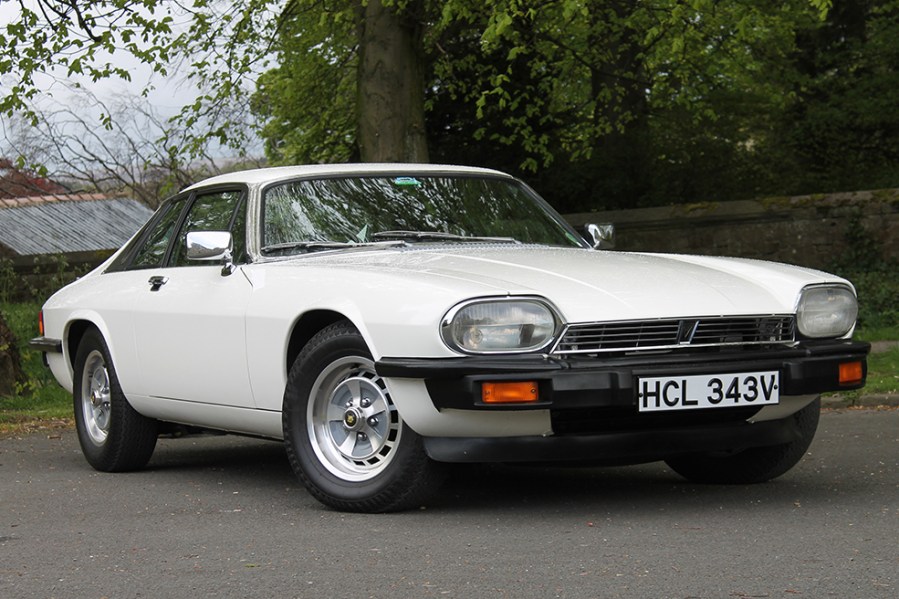
Jaguar XJ-S
The looks of the Jaguar XJ-S are a bit more challenging than the E-type’s, but many people are coming around to its charms. The earliest and latest cars are gaining traction as sought-after classics, with values strengthening as a result – but there are still bargains to be had.
For the XJ-S is perhaps the ultimate showcase of the Jaguar V12. First all off, the mere shape of it still resonates the fast while standing still effect of all true Jaguars, and of course all those influenced by William Lyons. To look down the vast bonnet is to imagine high speeds, and what’s more the XJ-S is significantly more aerodynamic than the E-type. This didn’t improve absolute top speed at first, but it certainly improved stability and refinement.
The XJ-S also enjoyed many years of improvements to the V12, such that it would become a true 150mph car, something that the E-type didn’t quite manage with complete honesty. The 1981 5.3 H.E. introduced a merciful dose of efficiency in the form of a high efficiency head that created positive turbulence in the combustion chamber and a stratified charge. This was coupled with a new ignition system, which again was updated in 1989. The XJ-S was facelifted more widely in 1991, marked by losing the hyphen to become XJS. By 1993 the V12 was a 6.0-litre, 333bhp monster with coil-on-plug ignition.
There was also the XJR-S with a special version of the 6.0-litre V12, with a bespoke crankshaft, pistons, and a clever Zytel digital ECU, all developed under Tom Walkinshaw Racing. These 1988-1993 models are becoming highly prized, but it’s also the convertible versions that are getting attention lately. Almost no matter which V12 XJ-S you pick, the performance, refinement, and character of this magnificent engine will be front and centre.
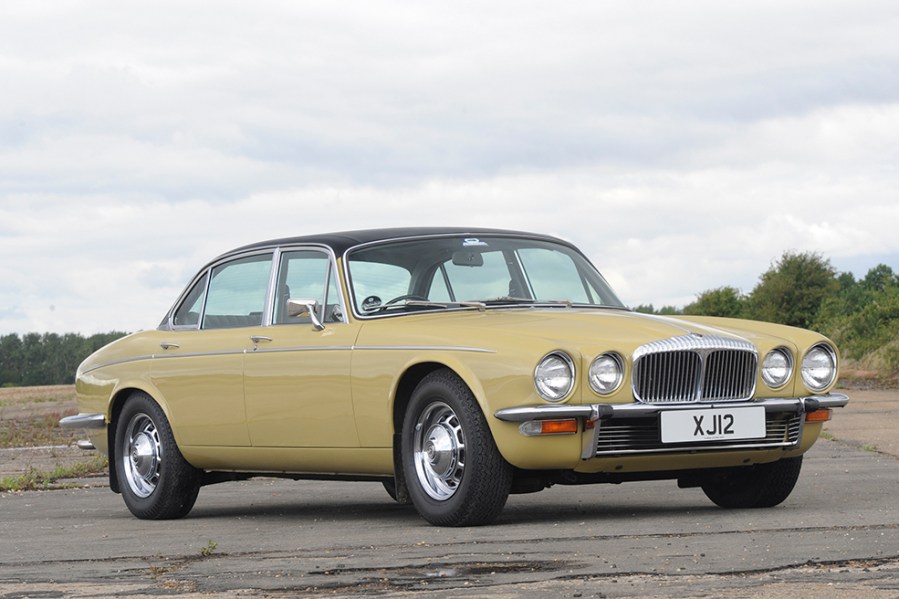
Jaguar XJ12
As is often the way, lose the svelte GT bodywork and a car suddenly becomes more affordable. So it is with the Jaguar XJ12, although it would be wrong to suggest that it’s a bad-looking car. Ever since the Series 1 was introduced in 1968, the Jaguar XJ has been one of the most sleek, sporty looking executive cars available, and with the XJ12 introduced in 1972 it had the engine to match.
The Series 1 XJ12 is a rare car, with only about 4000 of the 100,000 Series 1 XJ saloons built being fitted with the 5.3-litre V12. That makes it rarer, in fact, than the Series 3 E-type with the same engine. As such these are amongst the most collectible and expensive.
The most expensive of all, however, came with the Series 2 XJ12. This was the XJ12-C, the elegant coupe version of the XJ saloon with the V12 under the bonnet. These can go for serious sums – particularly right-hand-drive models, of which only 603 were made. Apart from a few cosmetic changes, the Series 2 XJ12 continued on with the same 272bhp V12 as used in the E-type. In 1977 a new three-speed automatic gearbox from GM endowed the XJ12 with much smoother gearchanges than the Borg-Warner unit had provided before it.
The Series 3 is one of the most affordable ways into XJ12 ownership, but that’s not to say that the Series 3 is a bottom-rung choice, far from it. Continuing all that was good about the XJ12, the Series 3 introduced in 1979 simply added more equipment including cruise control and more electrically controlled interior features. There was also, of course, the High Efficiency V12 engine introduced in 1981 which we’ve detailed for the XJS in the past section. Mercifully, too, thanks to careful styling, the Series 3 manages to integrate its 1980s-era impact bumpers with a degree of grace.
It took until 1992 for Jaguar to finally re-engineer the new XJ40 into the XJ81 to fit the V12 which, originally, it had never intended to use again after the Series 3. The V12 in this car thus benefitted from the big changes engineered for the XJ40, like the improved rear suspension and wider improvements to refinement from the stronger structure down to the smallest things like the ventilation system. By this time, as you’ll also read in the XJS section, the 6.0-litre V12 was ready to go, so not only could you appreciate the V12’s smoothness more in the XJ12 but also a whole load more performance.
There has to be something said about the X300 generation XJ12 as the last of the V12-engined XJ models. There’s the last 313bhp iteration of the V12, a four-speed automatic gearbox, the highest levels of refinement possible, and all for quite possibly the least amount of outlay. You can buy the sporty Jaguar XJ12 or plush Daimler Double Six X300 models for less than an equivalent XJ81.

Aston Martin DB7 V12 Vantage
Underneath the Aston Martin DB7 was, as many will say, a Jaguar. Indeed, there is the chassis of an XJ-S and under the bonnet there was even a Jaguar XJ6 engine. However, the DB7 was different enough, with bespoke suspensions settings and a clever composite body to reduce weight. We also can’t ignore its timeless good looks. And in 1999 the straight six was replaced with a V12 not from Jaguar, but from Ford.
To say it was two Duratec V6s bolted together was simplifying things a bit too much, not to mention glossing over Cosworth’s manufacturing of the block and head. It had been first showcased in the Ford Indigo, an Advanced Projects concept for the 1996 Detroit Show and was clearly in a specification far beyond relevance for any Mondeo. For the DB7 this 6.0-litre V12 produced an impressive 414bhp and 400lb.ft of torque, going up to 435bhp and 410lb.ft of torque for the 2002 DB7 GT.
For 1999 the DB7 received another round of improvements that had gradually been bringing the car into fair competition with its rivals since its introduction in 1994. The 2002 GT was the final evolution, offering the most focussed DB7 of all with stiffer suspension, sharper steering and a cleaner gear change. The problem is that the GT has become so desirable now that prices are shooting up; we recommend a standard V12 Vantage for much less. In fact, the best investment might well be a V12 Volante, and with some trick dampers you’d be halfway to a GT with all the extra luxury of an open roof to go with a fine and underrated V12. Just beware poorly maintained examples and buy on condition – engine issues can prove very, very expensive.
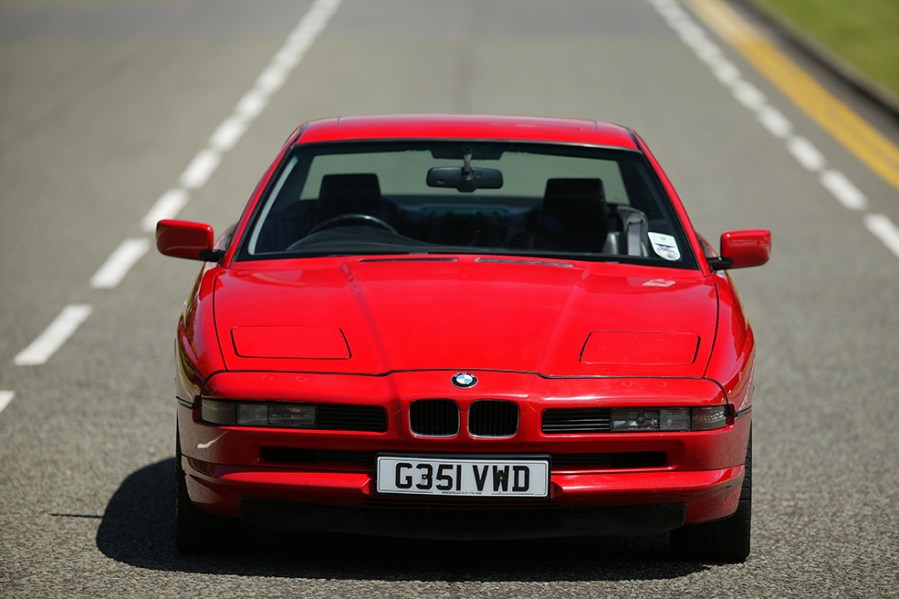
BMW 850i (E31)
What happens when you pursue the ultimate driving machine philosophy to the very end? Well in the late 1980s, riding the wave of its progressive superiority over the executive and sports saloon car market, BMW manifest this vision in the E31 8 Series. The whole body was generated using computer aided design (CAD) tools, producing a slick image of precision with a mere 0.29 drag coefficient. Inside there’s every button available to BMW at the time angled towards the driver, and a set of sharp white on black dials. The driving experience, however, was criticised as being a bit numb. Having made the ultimate driving tool, with things like its clever four-wheel-steering (Aktive Hinterachs Kinematik) system, BMW had engineered out all of the imperfect influences of dynamic engagement.
But if it’s smooth performance you’re after, little else from this time can match the BMW 8 Series, particularly when equipped with the V12. This was the M70, 5.0-litre V12 that first saw service in the 1987 750i, giving the 8 Series 156mph performance. The majority of V12 8 Series had this 296bhp, 332lb ft engine, but in 1992 a small number of 850 models raised the performance even higher. The new M73 engine introduced this year saw the 850Ci out to the end of production, producing 322bhp and 361lb.ft of torque, and shaving nearly a second off the 0-60mph time.
Then there were the special models. The Alpina B12, which had actually been introduced in 1990, increased power and torque for the existing M70 V12 by about 10 per cent resulting in a 174mph top speed. In 1992 a B12 5.7 was introduced, pushing outputs up again, now to 410bhp and 420lb.ft of torque. BMW’s own 850CSi couldn’t even match the 5.7, with its 375bhp and 406lbft, but it remains expensive today.
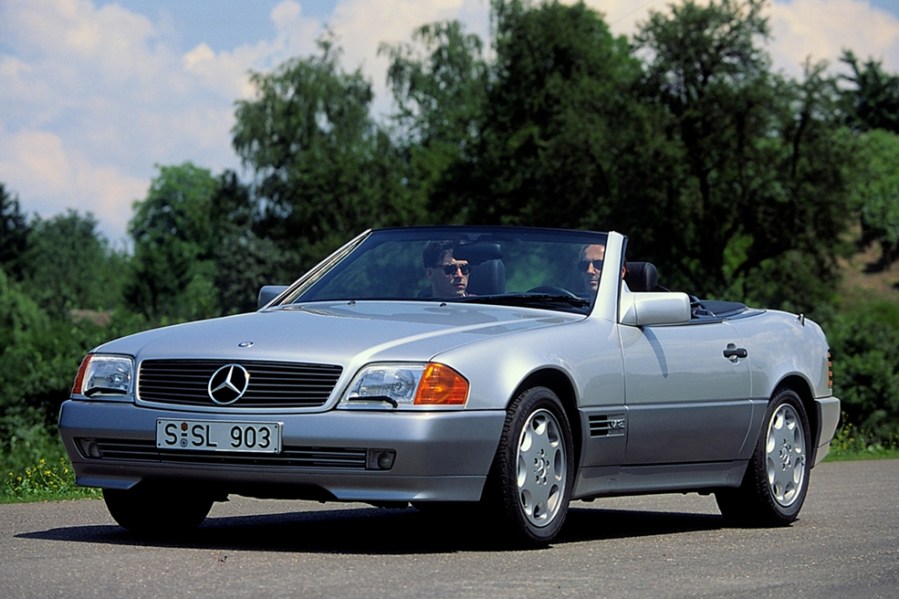
Mercedes 600SL (R129)
Perhaps as far into the modern era of refinement and performance as you can go without losing the style of something that’s now undeniably a classic, why not go to the top of this iceberg of perfection with Mercedes-Benz’s astonishing V12?
Offering unparalleled structural rigidity, safety and comfort for a 1990s GT, then simply, or rather not so simply, adding an electrically folding soft-top to the equation, the R129 SL was and remains an outstanding car. A six-cylinder 300SL is an impressive car but the V12 600SL is on another level.
First is the performance, with 389bhp and 420lb ft of torque on tap. It’s enough to launch the two-tonne SL up to 60mph in six seconds and hard onto the 155mph limiter not long after. But this 6.0-litre, 48-valve, quad-cam M130 V12’s most impressive feature isn’t actually in outright performance, rather smoothness. It’s the kind of engine that you might not notice running and will only ever raise its voice if seriously provoked.
The R129 SL received a facelift in 1995, which saw the standard fitment of a new electronic five-speed automatic gearbox replacing the four-speed and optional four plus overdrive unit from before. Another facelift in 1998 brought further design changes, particularly on the interior. It’s also worth noting that the naming system was changed in 1993, making the 600SL the SL600.
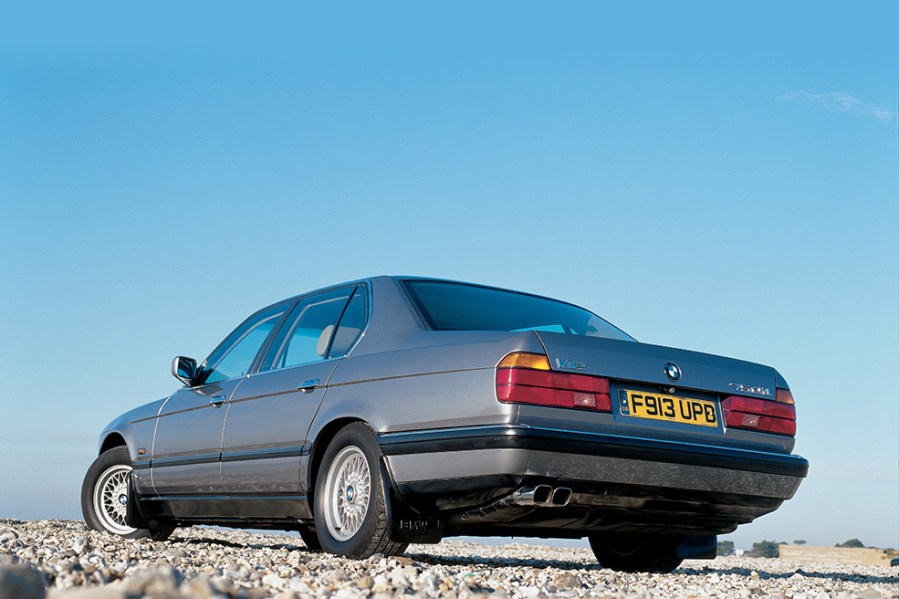
BMW 750 (E32)
The E32 7 Series was a tour de force for BMW, representing the huge progress it had made over the previous few decades. If anything were to confirm its place at the exclusive table of luxury car manufacturers, it would be a V12. So the M70 was developed, similar in construction to the excellent M20 six-cylinder only doubled and opposingly banked at 60 degrees. Producing 295bhp it shot the big BMW to the top of the big executive car performance stakes, even above the mighty Mercedes-Benz 560SE.
Despite all this, the BMW 7 Series has had an upward battle to establish its image amongst the impeccable prestige at the top. This meant bargains could be bought on the used market for many years. That has, unfortunately, come to an end, and good examples of the 750 will now set you back at least five figures.
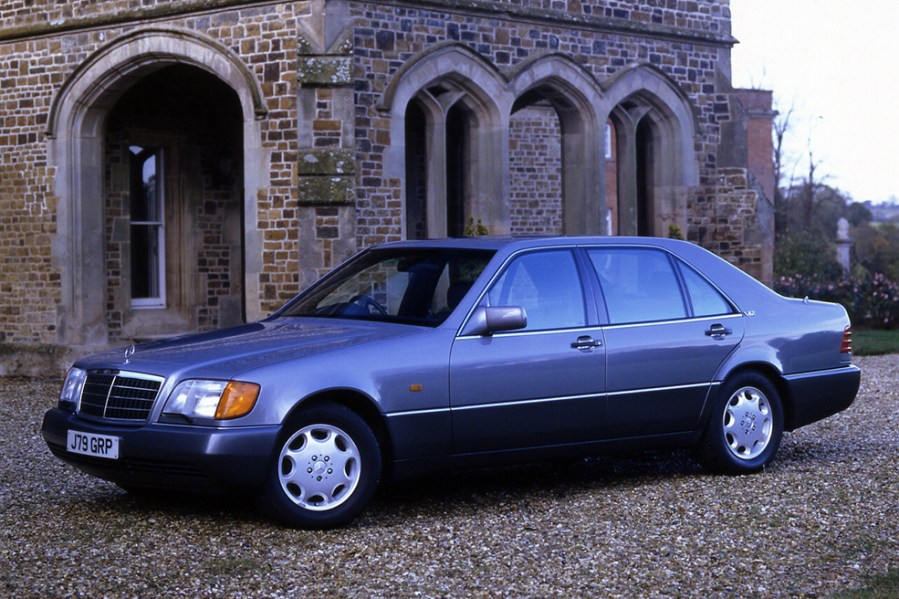
Mercedes S-Class (W140)
Mercedes-Benz hadn’t planned on building a V12, but with BMW posturing and Jaguar continuing to demonstrate that there was demand for the engine, particularly in the US, it was settled. In 1992 Mercedes-Benz unveiled its all-new V12 under the bonnet of a new S-Class. This was, in many ways, a more sophisticated engine than BMW’s, as detailed for the SL previously, and secured the W140 S-Class recognition as the best car in the world. Today that perception still rings true for many enthusiasts, and so there is a strong market for the W140 S-Class, particularly the range-topping S600.
While a good S-Class can cost upwards of £5,000, expect to pay twice this for the privilege of owning one of the finest cars with one of the finest engines made by one of the finest marques of history. The coupe SEC (later CL) models were once a hidden bargain route in but are now often more expensive than the saloon.
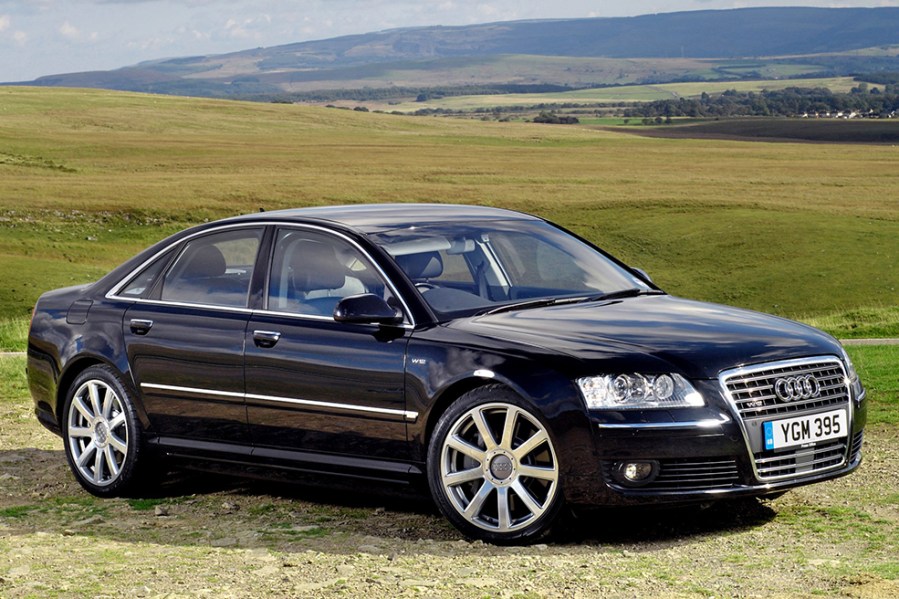
Audi A8 W12 (D3)
The V12 one-upmanship continued with subsequent generations of BMW 7 Series and Mercedes S-Class, but one we might forget is the Audi A8 W12 introduced in 2005. It’s true, it’s not quite a V12, but as a feat of engineering it’s more than worthy of inclusion here. More compact than the 4.2-litre V8, it produced 444bhp and 428lb ft of torque which put through the quattro all-wheel-drive system delivered a 0-60mph time of just 5.2 seconds. There’s also the aluminium spaceframe that kept weight below two tonnes, and enough technology to worry its rivals. Your only problem is finding one for sale!




